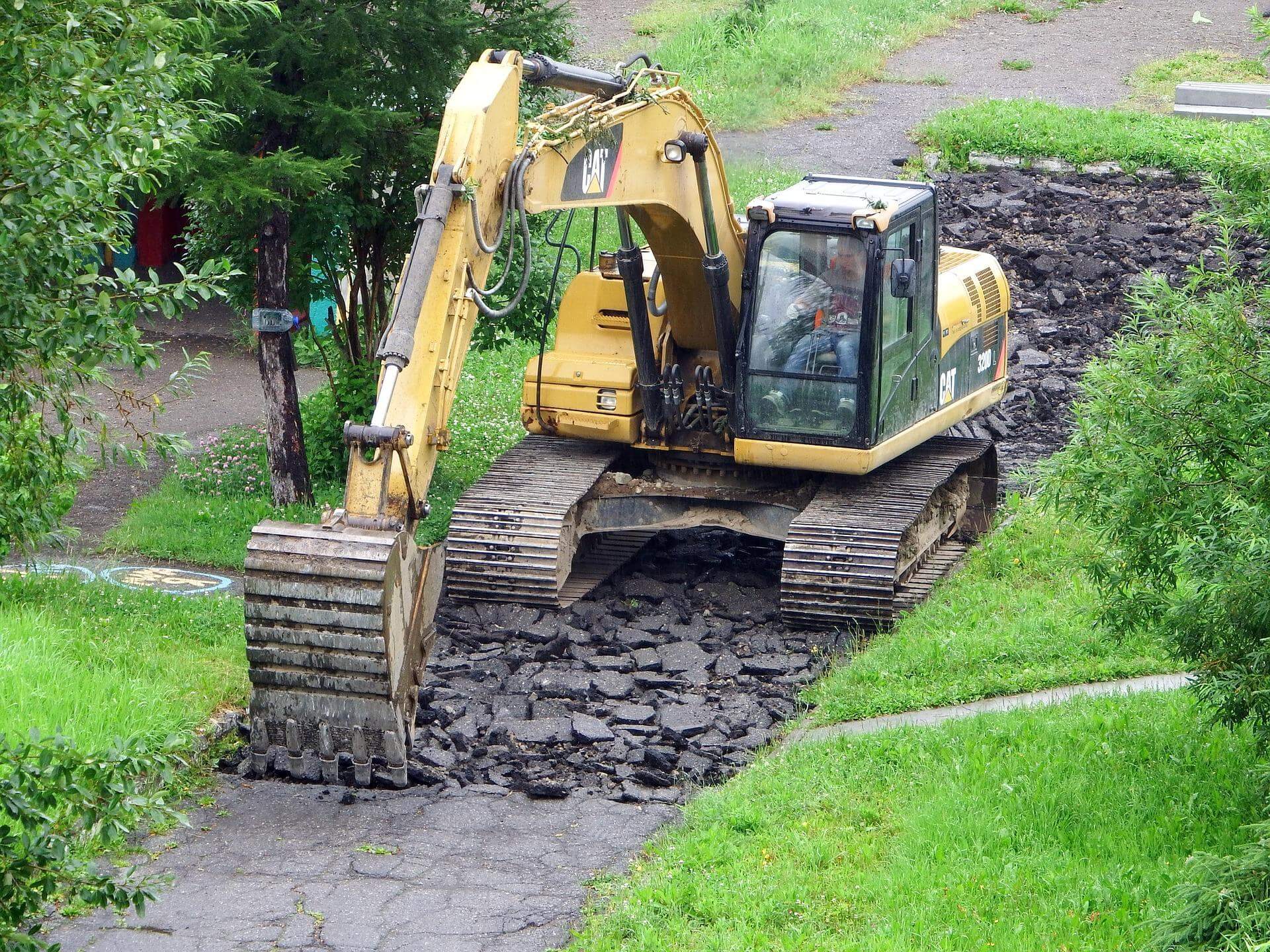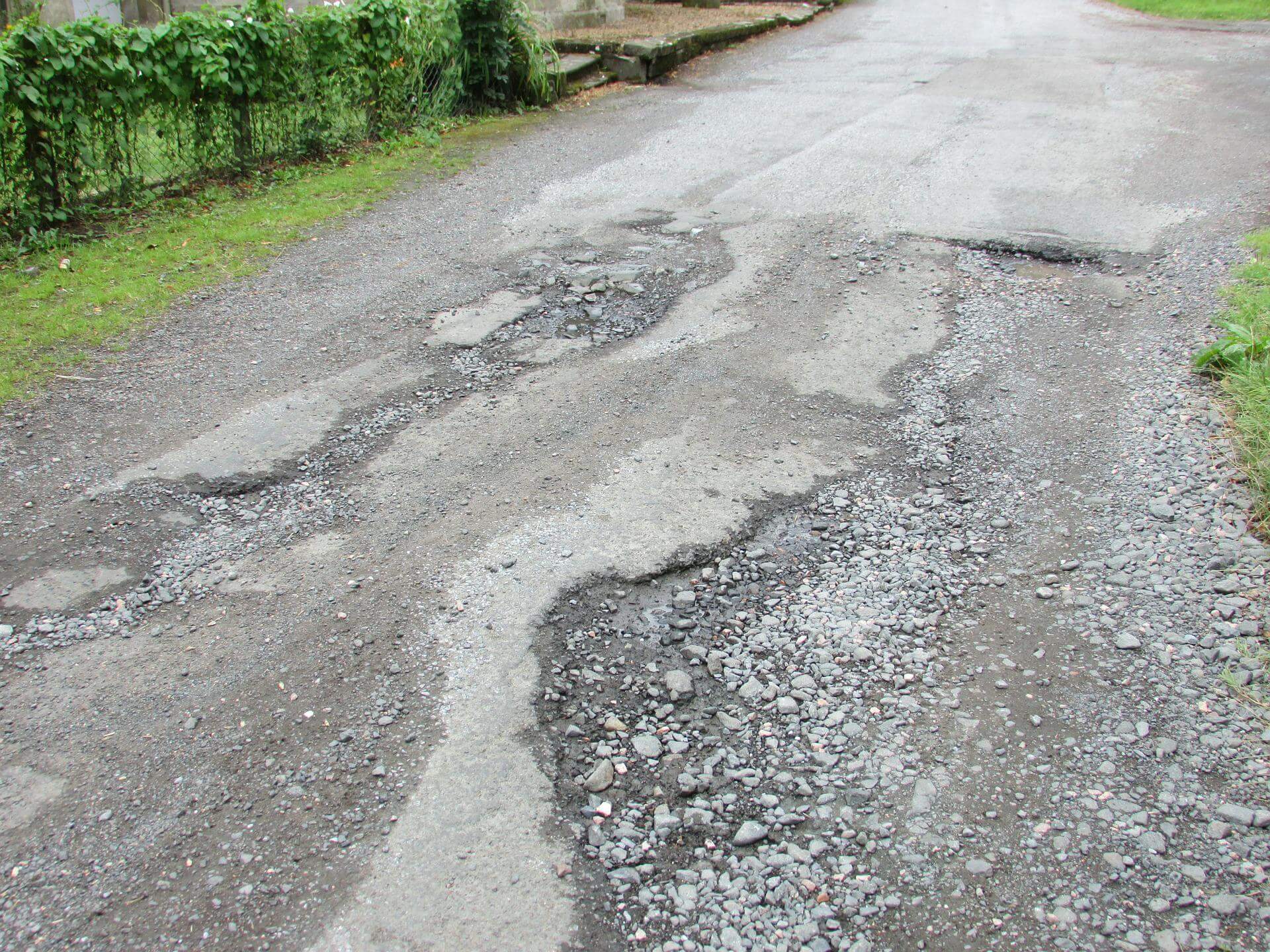How To Repair an Asphalt Driveway
Asphalt driveways are a common and attractive option for many homeowners. However, like any paved surface, they will eventually succumb to wear and tear. The good news is that asphalt driveway repair is possible, and it doesn’t have to be a daunting task. Here’s a look at some of the most common types of asphalt damage, as well as how they can be effectively repaired. If you need any of these repair services, contact us at Pinx Group today.



Corrugations
Corrugations are ripples in the pavement that run parallel to the direction of traffic. They can be caused by excessive speed, heavy traffic, or poor drainage. Corrugations differ from rutting in that they do not hold water.
Corrugations can be repaired using a process called milling. Milling involves using a machine to remove the top layer of asphalt in order to even out the surface. The area will then need to be compacted with a roller to ensure a smooth, even surface.
Alligator Cracking
Alligator cracking, also known as crocodile cracking or spider webbing, is a type of fatigue damage that occurs when the asphalt pavement is stressed beyond its capacity. Alligator cracking typically forms in areas where there is heavy traffic, such as on highways and roads. The cracks form due to the weight of the traffic on the pavement. As the traffic passes over the cracks, they widen and deepen, eventually forming alligator-shaped polygons.
Repair of alligator cracks will typically require the use of an asphalt milling machine to remove the damaged asphalt and a paving machine to lay down new asphalt. The new asphalt will need to be compacted with a roller to ensure a smooth, even surface. The other common method used to repair alligator cracking is resurfacing. This involves removing the top layer of asphalt with a milling machine and replacing it with a new layer of asphalt. Resurfacing is typically only done when the alligator cracking is not too severe.
Edge Cracking
Edge cracking is a type of pavement damage that typically occurs on the edges of the road. The crack starts at the edge of the pavement and works its way inward. Edge cracks are usually caused by poor drainage, improper construction, or excessive weight on the edges of the pavement.
Edge cracks can be repaired with sealant or by milling out the damaged asphalt and replacing it with new asphalt.
Slippage Cracking
Slippage cracking is a type of fatigue cracking that is caused by the loss of adhesion between the asphalt and the underlying layer. This can be caused by poor compaction, deicing chemicals, or excessive traffic. Slippage cracks often appear as diagonal cracks running across the pavement.
Slippage cracks can be repaired using a process called milling. Milling involves using a machine to remove the top layer of asphalt in order to even out the surface. The area will then need to be compacted with a roller to ensure a smooth, even surface.
Joint Reflection Crack
Joint reflection cracks are cracks that form over existing cracks in the underlying pavement. They are called reflection cracks because they reflect the position of the existing cracks. Joint reflection cracks are typically caused by thermal expansion and contraction, improper joint construction, or poor drainage.
Joint reflection cracks can be repaired using a process called sealing. Sealing involves filling the cracks with a sealant material that will prevent water and debris from entering the crack and causing further damage.
Transverse Crack
Depending on the direction in which the crack occurs relative to the pavement, cracks can be classified as either transverse or longitudinal. Transverse cracks are perpendicular to the pavement’s centerline or laydown direction. Longitudinal cracks are parallel to the centerline or laydown direction.
Transverse cracks are caused by thermal expansion and contraction, traffic loading, and poor drainage. Thermal expansion and contraction will cause a transverse crack when the pavement temperature drops rapidly, causing the asphalt to cool and shrink. Traffic loading will cause a transverse crack when vehicles cross over an area of pavement that is already weakened by another factor, such as poor drainage. Poor drainage can cause a transverse crack when water seeps into the pavement through cracks or pores and then freezes, expanding and weakening the pavement.
The most common method of repairing a transverse crack is to seal it with a hot pour rubberized asphalt sealant. The sealant material will prevent water and debris from entering the crack and causing further damage.
Longitudinal Crack
Longitudinal cracks are also caused by traffic loading, thermal expansion and contraction, and shrinkage of the asphalt. But unlike transverse cracks, longitudinal cracks run in the direction of traffic.
One way to repair a longitudinal crack is by milling and resurfacing the affected area. This method involves using a large machine to remove the top layer of asphalt, exposing the underlying pavement. The milling process can also be used to level out any surface irregularities in the exposed pavement. Once the area is milled, it will be cleaned and primed before new asphalt is laid down and compacted.
Another way to repair longitudinal cracks is by injecting them with hot pour rubberized asphalt sealant. This method can be used for both small and large cracks. For small cracks, the sealant can be injected using a handheld caulking gun. For larger cracks, a pump will be used to inject the sealant. The advantage of this method is that it can be completed quickly and does not require the removal of any asphalt.
Block Cracking
This type of damage consists of a series of large cracks that are perpendicular or parallelogram shaped and typically located in the wheel path. Block cracking is caused by traffic loading and results in structural failure and loss of ride quality. The best way to repair block cracks is to remove the cracked pavement and replace it with new asphalt.
Frequently Asked Questions
Asphalt pavement can fail for a variety of reasons. Some of the most common causes of failure are poor drainage, inadequate thickness, settlement, poor compaction, and surface defects.
If the asphalt is cracked, then it will need to be replaced. If the asphalt is just damaged, then it can be repaired using a cold patch.
It depends on the size and extent of the damage. A small repair might cost as little as $100, while a major repair could cost up to $1,000. We have examined the various factors and costs of repairing asphalt pavement and driveways in our detailed article here.
Crumbling edges on an asphalt driveway can be caused by poor drainage, lack of compaction, or freeze/thaw cycles in the winter. The best way to repair crumbling edges is to cut them back and make sure they are properly compacted. You can find more information on repairing crumbling edges here.
Depressions in an asphalt driveway can be repaired by first filling the depression with sand or a similar material. Once the depression is filled, it should be compacted using a tamper or roller. Finally, the area should be sealed with a high-quality sealer to prevent future damage. You can find more information on repairing asphalt driveway depressions here.
It is possible to pave over existing asphalt, but it is not always the best option. Paving over existing asphalt can result in a weaker pavement that is more susceptible to damage. If you do decide to paved over existing asphalt, be sure to use a strong and durable sealer to protect the new pavement. You can find more information on paving over existing asphalt here.
This is a common decision point many homeowners face. Resurfacing your asphalt driveway involves adding a new layer of asphalt over the existing driveway. Replacing your asphalt driveway involves removing the existing driveway and starting from scratch.
There are several factors you should consider when deciding whether to resurface or replace your driveway and we examine these in our detailed article here.
don’t hesitate to contact us
“Safety Saves Lives, Service Saves Jobs”
Give us a call and discover what we can do for your property or your business.
We have 3 locations in New Jersey to better serve you.
Contact us Today to get started!